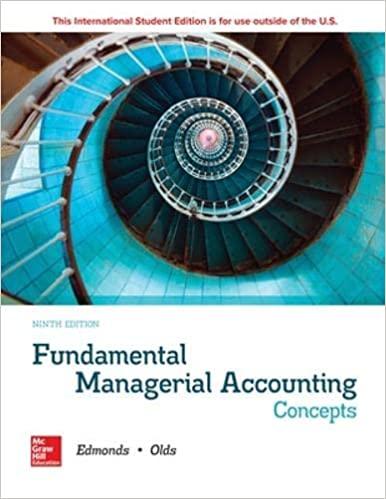1) A company decides to ignore a very small error in its inventory balance. This is an example of the application of the A) consistency principle B) disclosure principle C) conservatism D) materiality concept 2) First Street, Inc. has 6 units in ending merchandise inventory on December 31. The units were purchased in November for $190 each. The price lists from suppliers indicate the current replacement cost of the item to be $182 each. Which of the following statements is true of the effects of the adjustments to ending merchandise inventory on the cost of goods sold? A) The cost of goods sold would increase by $8. B) The cost of goods sold would decrease by $48. The cost of goods sold would not be affected. D) The cost of goods sold would increase by $48. 3) A company purchased 110 units for $40 each on January 31. It purchased 200 units for $25 each on February 28. It sold 200 units for $50 each from March 1 through December 31. If the company uses the weighted average inventory costing method, calculate the amount of Cost of Goods Sold on the income statement for the year ending December 31. (Assume the company uses the perpetual inventory system. Round any intermediate calculations two decimal places, and your final answer to the nearest dollar.) A) $9,400 B) $4,400 $5,000 D) $6,064 4) Which of the following inventory valuation methods should be used for unique items? A) first-in, first-out B) specific identification C) last-in, first-out D) weighted average 5) Which of the following inventory costing methods yields the lowest net income during a period of rising inventory costs? A) weighted average B) first-in, first-out C) specific identification D) last-in, first-out 6) Inventory turnover measures A) how rapidly merchandise inventory is sold B) how rapidly merchandise inventory is purchased C) the days' sales in inventory ratio D) the time period for inventory to become obsolete 7) Which of the following inventory costing methods is based on the actual cost of each particular unit of inventory? A) last-in, first-out B) weighted average C) specific identification D) first-in, first-out







